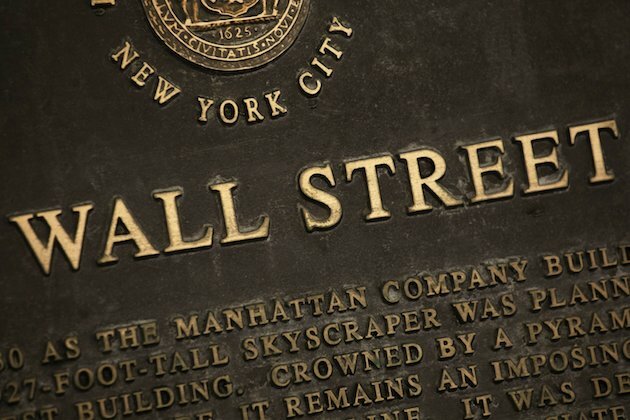The Green Revolution: Exploring Sustainable Insulation Board Materials
7Newswire
11 Oct 2023, 06:50 GMT+10

As sustainability becomes more important, the construction industry is seeking greener insulation solutions derived from natural and renewable resources, instead of fossil fuel-based materials. This aligns with a broader "green revolution" in building.
Sustainable insulation options like cork, hemp, mycelium, and agricultural byproducts show promise as eco-friendly alternatives. Although barriers exist, green insulation materials support energy efficiency while reducing environmental impacts.
Cork Insulation
One promising green insulation is cork, derived from the bark of cork oak trees. Cork contains suberin, giving it effective insulating properties on par with conventional materials. Cork production is sustainable since the trees are not cut down during harvesting.
With anti-microbial and sound dampening abilities, cork is gaining popularity as an eco-friendly insulation board. High costs are still a disadvantage, but cork remains a viable green option.
Hemp Insulation
Another natural material under consideration is hemp, as the fast-growing plant sequesters substantial carbon as it grows. Hemp stalk fibres have inherent insulating properties and are anti-fungal and moisture resistant.
Hemp insulation lacks chemical irritants found in some traditional materials. However, processing techniques to produce hemp building insulation are still in development. Legal barriers on industrial hemp cultivation also remain in some regions. But hemp's sustainability makes it an exciting green insulation prospect.
Mycelium Insulation
Mycelium, or fungus roots, can also be used to create natural fibre insulation boards. Companies like Evocative grow mycelium in agricultural waste products, which binds to form a composite material molded into rigid insulation. Mycelium insulation is compostable and uses less energy, water, and processing than conventional types. Although not yet widely available commercially, mycelium represents an innovative application of organic materials.
Agricultural Byproducts
On the agricultural side, rice hulls show potential as a filler for green insulation boards. Rice cultivation generates millions of tons of hulls as a byproduct, typically burned for disposal. Using rice hulls in insulation composites enhances sustainability and provides an outlet for this abundant waste stream. Insulation made from denim cotton scraps also recycles textile waste into a useful green building material.
Straw Bale Insulation
An age-old building material, straw bales can also provide insulation for eco-friendly construction. Straw is the dried stalks left over after grain and seed harvesting. Bundle dried straw together and you have a straw bale, which can be used like an extra-large insulation board.
The air pockets within straw bales resist heat flow, giving them an insulation R-value comparable to fiberglass and rigid foam boards. Installing bale walls in a process called Nebraska stropping leaves the straw exposed on the interior, creating a natural aesthetic. Straw bales are renewable and locally available agricultural byproducts, avoiding insulation shipped long distances. They provide an insulating use for leftover straw that previously was burned or landfilled.
Cellulose Insulation
Another agricultural byproduct showing potential is cellulose, made from recycled paper products. InsulationPoint noted that paper and cardboard are shredded and ground to make loose cellulose insulation or denser boards. The recycled paper content gives cellulose insulation an eco-friendly angle.
Testing shows cellulose insulation levels with or exceeds the performance of conventional fiberglass. Some cellulose insulations add borates as fire retardants, but non-toxic options without chemicals are available. Like straw, cellulose takes advantage of paper waste to create a usable green insulation product.
EPS Foam Alternatives
Polystyrene foam boards, marketed under brands like EPS, are controversial due to health and environmental issues. The manufacturing process for foam board insulation uses hazardous chemicals linked to learning and development disorders. Foam boards also commonly utilize hydrofluorocarbons, powerful greenhouse gases.
This has led to interest in more ecological rigid foam board replacements. Manufacturers are developing insulation boards made from epsomite magnesium sulphate as an alternative mineral-based, flame-retardant foam. Cementitious rigid fibre boards made from wood pulp and cement are another emerging EPS alternative using more natural materials.
Wool Insulation
A classic natural fibre, wool from sheep provides inherent insulation properties that add sustainability to building. Raw wool contains lanolin oils that resist moisture and microbes naturally. Reused wool from textile industry scraps provides insulation as an eco-friendly waste recycling stream. Wool insulation manufacturers claim it outperforms mineral wool for energy efficiency, noise reduction and improved indoor air quality. Wool has one of the highest carbon negativity ratings among building insulation materials. Along with benefitting sustainable food systems, wool insulation offers a renewably sourced alternative to conventional fiberglass rolls and rigid mineral wool boards.
Future Directions
Even more innovative sustainable insulation solutions are in development, like seaweed-based foams, bio-bricks from corn stalks and coconut fibre boards. The quest for green insulation materials aligns with global resource challenges. Despite barriers, eco-conscious builders recognize the value of plant-based, renewable options to construct a sustainable built environment.
Final words
The search for greener insulation is part of a broader green revolution in the building sector. Natural materials like cork, hemp, mycelium, and agricultural byproducts show promise as alternatives to conventional insulation derived from fossil fuels. Developing and overcoming obstacles to sustainable insulation will support energy efficiency and reduced environmental impacts from construction. The materials explored today will help build the green future of insulation.
The green building revolution is thoughtfully sourcing natural and recycled materials for insulation. Agricultural residues, paper waste and natural fibres offer opportunities for effective insulation with reduced environmental footprints. Continued manufacturing innovations to improve performance and mainstream adoption will support greener insulation alternatives gaining market share in the future. Share
Share
 Tweet
Tweet
 Share
Share
 Flip
Flip
 Email
Email
Watch latest videos
Subscribe and Follow
Get a daily dose of Maryland Leader news through our daily email, its complimentary and keeps you fully up to date with world and business news as well.
News RELEASES
Publish news of your business, community or sports group, personnel appointments, major event and more by submitting a news release to Maryland Leader.
More InformationInternational
SectionThousands gather in Himalayas as Dalai Lama celebrates 90th birthday
DHARAMSHALA, India: The Dalai Lama turned 90 on July 6, celebrated by thousands of followers in the Himalayan town of Dharamshala,...
Fans perform WWII-era Fascist salute at Marko Perković’s mega concert
ZAGREB, Croatia: A massive concert by popular Croatian singer Marko Perković, known by his stage name Thompson, has drawn widespread...
U.S. Treasury Secretary says Musk should steer clear of politics
WASHINGTON, D.C.: Elon Musk's entry into the political arena is drawing pushback from top U.S. officials and investors, as his decision...
TikTok building U.S.-only app amid pressure to finalise sale
CULVER CITY, California: TikTok is preparing to roll out a separate version of its app for U.S. users, as efforts to secure a sale...
Trump defends use of 'Shylock,' citing ignorance of slur
WASHINGTON, D.C.: President Donald Trump claimed he was unaware that the term shylock is regarded as antisemitic when he used it in...
Summer travel in chaos as French air traffic controllers walk off job
PARIS, France: A strike by French air traffic controllers demanding improved working conditions caused significant disruptions during...
Business
SectionFedEx, UPS step up as Canada Post loses market share in strikes
OTTAWA, Canada: With Canada Post struggling to maintain operations amid labour unrest, rivals like FedEx and UPS are stepping in to...
U.S. stocks steady Tuesday despite tariffs turmoil
NEW YORK, New York - U.S. and global markets showed a mixed performance in Tuesday's trading session, with some indices edging higher...
Beijing blamed for covert disinformation on French fighter jet Rafale
PARIS, France: French military and intelligence officials have accused China of orchestrating a covert campaign to damage the reputation...
Birkenstock steps up legal battle over fakes in India
NEW DELHI, India: Birkenstock is stepping up its efforts to protect its iconic sandals in India, as local legal representatives conducted...
Beijing hits back at EU with medical device import curbs
HONG KONG: China has fired back at the European Union in an escalating trade dispute by imposing new restrictions on medical device...
Wall Street reels after Trump invokes new tariffs
NEW YORK, New York - Monday's trading session saw mixed performances across U.S. and global markets, with several major indices posting...













